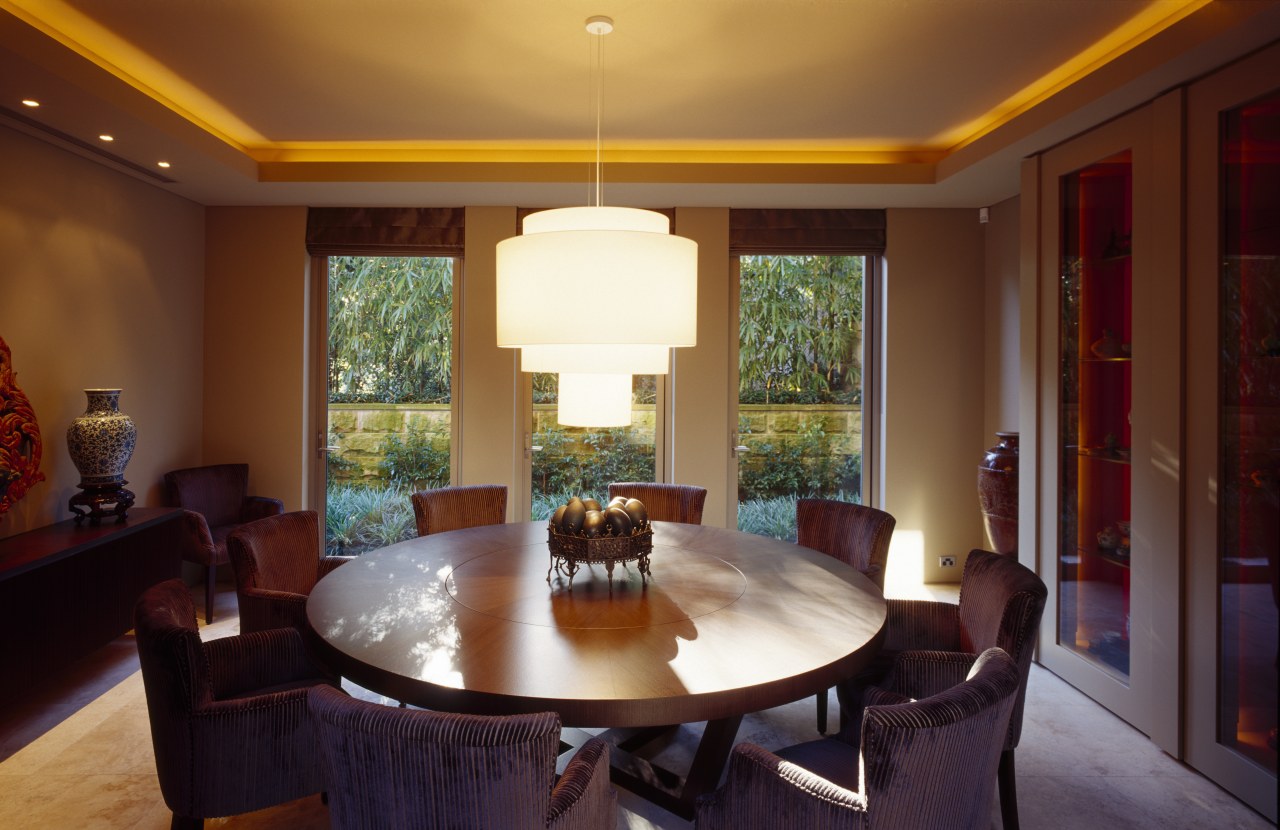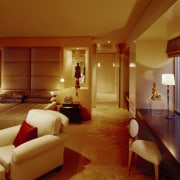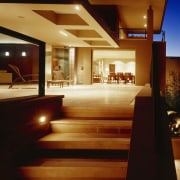Sense of arrival
This residence boasts a dramatic entry, large, symmetrical interiors and harbour views

Seaside homes are naturally shaped to maximise their views, but because coastal land can be rugged and steep, site constrictions often play a defining role. The design of this house, nestled into a steep, inner-harbour hillside, offers a case in point.
Conceived by Corben Architects, with interiors by Garth Barnett Designers, the house is approached from an entry pavilion at street level, nine metres above. From here, the lift takes visitors down behind a windowless wall to emerge at a dramatic, double-height corridor, which leads to the home proper.
Corben team leader on the project was Mark Clark. He says the original house was oriented away from the harbour views, with access only via three flights of external stairs.
The clients demolished this structure and asked Clark and Barnett to replace it with a residence oriented to the views, with a user-friendly entrance, spacious interiors and the upmarket but approachable air of an understated resort.
"The new house sits in the middle of the property, halfway between the street above and harbour's edge below," says Clark. "It is substantial in size, but the residence avoids an overwhelming presence."
A careful choice of design elements and cladding options helps downplay the generous proportions. Architecturally, the house has a fragmented feel, with the roofs appearing to float just clear of supporting columns. The walls and roofs are designed to be seen as a disconnected series of planes with the overall effect that the building seems lightweight and airy.

"Skylights punctuating the roof forms contribute to this impression, by increasing natural light and avoiding long stretches of ceiling."
The exterior cladding also helps make the house seem less monolithic. Solid sandstone on the lower levels is replaced by cement render on the middle level of the house, while timber batten walls feature on the uppermost level. The move from solid stone up to light wood cladding creates a tapering effect that again appears to reduce the scale of the building.
The house was conceived as two pavilions book-ending a central terrace, which acts as the formal living area. The terrace also creates a viewing platform, looking to the pond set between the hill and the house on one side, and on the other, to the harbour views.
The house is laid out over three levels. The central level is utilised as a public space, and comprises a dining room and study in the east pavilion and a kitchen, family area and media room in the west wing. Private rooms, such as the bedrooms, a gymnasium, and a maid's quarters, are ranged across the storeys above and below.
"Guests travelling down to the home by lift are initially shielded from the views. Upon emerging into the double-height colonnade, they are greeted by the sight of an expansive ornamental pond and glimpses of the sea," says Clark. "To add to the atmosphere, a waterfall trickles down the retaining wall into the pond, and the entire area is flanked by unembellished columns."
Garth Barnett says in response to the client's brief, the interiors are modern, comfortable and restrained.

"Cream travertine flooring runs throughout, providing a solid grounding, and all the walls in the house are painted a warm brown," says Barnett. "A palette of natural tones, including creams, browns and reds, helps draw disparate pieces together. However, the emphasis is on textures, such as tweed and satin fabrics, and several custom furniture pieces reflect this.
"Wood cabinetry and panelling tie in with the natural ambience and feature in several rooms. An eclectic furniture selection adds to the home's relaxed, approachable feel."
There is also a number of statues of Buddha and other Asian artefacts presiding over the interior, a little like household gods.
"The owners already had an extensive array of artworks collected on their travels and we have created appropriate niche environments to display these and introduced a few of our own," says the designer.
One artwork introduced by Barnett is a limestone feature wall that he designed, which was carved in Bali.
"The carved elements in the wall contrast well with the generally clean-lined interior," he says. "Along with the futuristic sense of arrival and modernist lines of this residence, the house also has a traditional air. The restrained colour palette, generous symmetrical layouts, and contemporary interpretation of classic elements all play their part."
Credit list
Interior designer
Builder
Roofing
Joinery
Lighting
Kitchen cabinetry
Floors and walls
Basin
Kitchen design
Cladding
Flooring
Paints and varnishes
Blinds
Benchtops and splashback
Vanity
Bath
Taps
Story by: Charles Moxham
Photography by: Brett Boardmenn
Home kitchen bathroom commercial design
Classic looks, contemporary efficiency
Diving into nature
Personality plus












